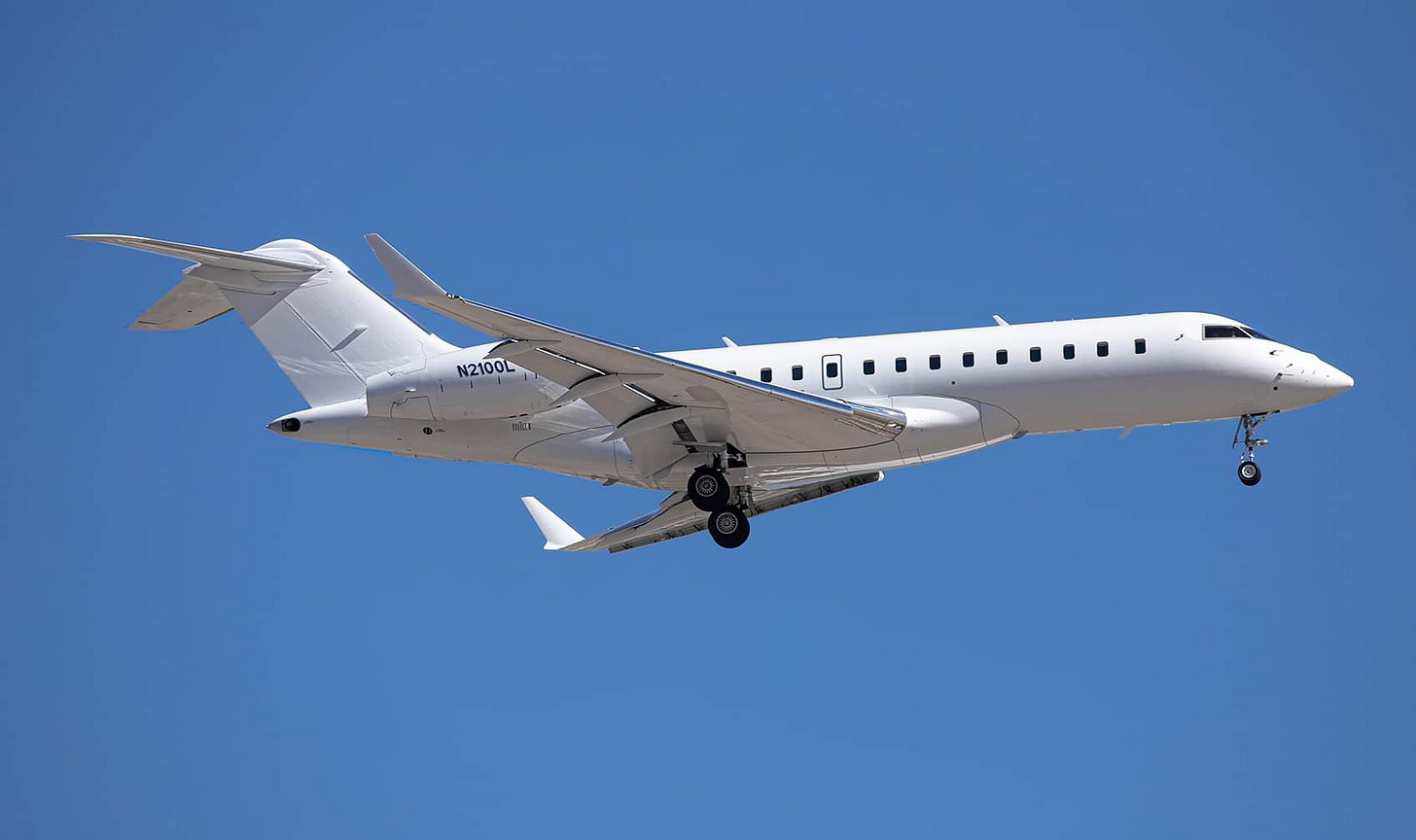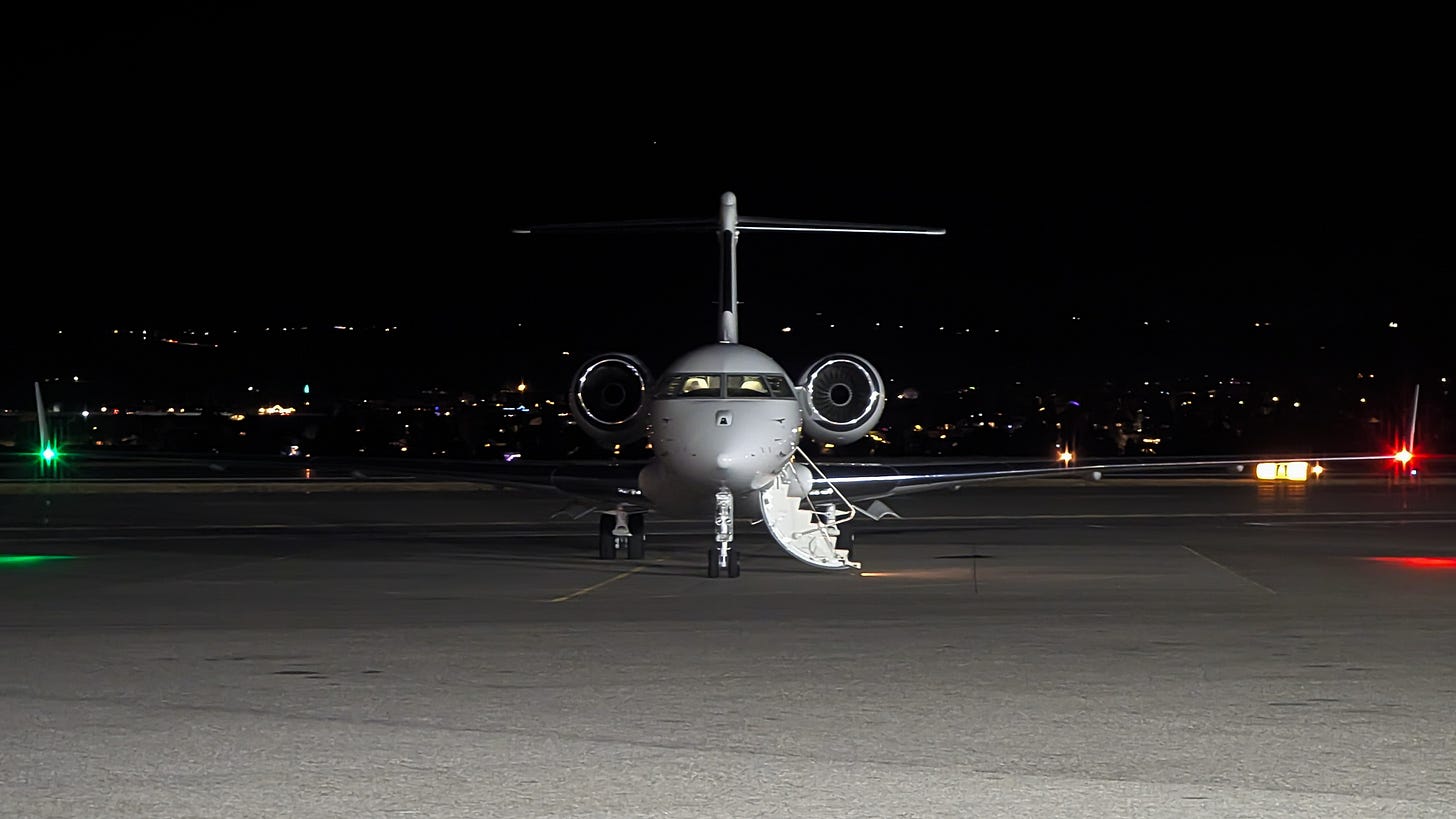U.S. Army to Expand ISR Pilot Training with New Bizjets
With new demonstrator jets flying, the U.S. Army is seeking responses from companies to provide more bizjets to train future Army ISR bizjet pilots
As the brand new ATHENA jets are starting their flight test campaigns, ARES and the two ARTEMIS jets are continuing their (near-)daily operational flights. At the same time, the U.S. Army is also running the early stages of a pilot training program for their future HADES bizjet pilots which encompasses two contractor-owned Global 6500 bizjets for the program. To expand its bizjet pilot training program, the U.S. Army published a 'Sources Sought Request', a procedure used to conduct market research for, in this case, three more bizjets.
Need to catch up on the other ISR bizjet programs of the U.S. Army? Read more in previous posts about the operational ARES and ARTEMIS jets, the brand new ATHENA jets, or a general overview by clicking the underscored text.

Starting in October 2025, the contractor must provide three Bombardier Global 6500 jets for the U.S. Army’s training program. The Sources Sought Request specifies that the three bizjets will fly a minimum of 450 flight hours per month, with an option for an additional 150 hours. In addition to this inflight training, the upcoming contract will include classroom and on-aircraft training as well. Currently, Leidos provides two Global 6500 jets for the U.S. Army’s flight training program. These two jets, N2100L & N1098L, fly (near-)daily flights around the Western and Central United States with AXLE## callsigns. Next to those regular flights, the two jets have flown to airports outside the continental United States several times as well. These OCONUS training flights will also be included in the new contract. While the jets have only flown to Alaska, Hawaii, and Puerto Rico for the OCONUS training flights, one of the two jets has also visited South Korea earlier this year. The jet was likely used to fly the director of the U.S. Army's ISR Task Force to Osan Air Base, where the first ATHENA jets will likely be deployed in late 2024.
Leidos is not the only (main) contractor already participating in the U.S. Army’s bizjet pilot training program. To complement the inflight training, CAE is providing classroom training programs and several Bombardier 6500 full-flight simulators. Using these simulators, the U.S. Army can drive down the training costs ‘‘by nearly 70%’’ and allows the instructors to replicate abnormal situations that cannot be safely replicated during an actual flight. With these two contractors, the U.S. Army is planning to qualify more than 60 new Global 6500 pilots next year to prepare for the arrival of the ATHENA, and later the HADES, ISR bizjets. Starting in late 2025, the three new bizjets will significantly increase the number of pilots for the U.S. Army’s HADES program.

The Sources Sought Request is part of the U.S. Army’s push towards a bizjet-based platform for its intelligence, surveillance, and reconnaissance missions. As part of this campaign, the contractor-owned and operated ARES and ARTEMIS jets have already been flying operational missions for several years. Recently, the first two ATHENA jets have started their respective flight test campaigns as well. ATHENA is the bridging phase between the ARTEMIS and ARES jets and the final HADES bizjets. The four ATHENA jets will have more advanced SIGINT capabilities and, in contrast to ARES and ARTEMIS, will be equipped with a radar sensor. Another difference with the contractor-owned and operated jets is that the ATHENA jets will likely be (partially) flown by U.S. Army pilots, but this is not confirmed (yet). The final HADES jets, which will also be based on the Bombardier Global 6500 bizjet, will be fully owned and operated by the U.S. Army. The high-altitude, long-endurance ISR jets will be used to ‘‘detect, locate, identify and track critical targets’’ for long-range targeting and surveillance.
Conclusion
As part of the expanding U.S. Army ISR bizjet program, the Army is now looking for three more Bombardier Global 6500 jets to train its future pilots. The jets (which will not be equipped with ISR equipment) will be complemented by classroom, simulator and on-aircraft training. Leidos is now providing two Global 6500 jets for the training program but after the first Army pilots have received their qualifications, the program is now set to be significantly expanded. As the U.S. military and its allies shift focus to (near-)peer adversaries, this expansion is yet another example of the push towards ISR bizjets and their increasing relevance in the current era of (renewed) great power competition.
Thank you
Thank you to DMAviation and Billings Spotter on X/Twitter for allowing me to use their photos, and thank you for reading this post! As always, feel free to reach out with your thoughts, questions and/or suggestions for future posts as well. If you have information or photos, you can always contact me via DMs (@bizjetsofwar) and/or send an email (see the About page). You will always stay anonymous and the information/photos will not be shared without explicit approval, but please do not send information you are not allowed to share.



